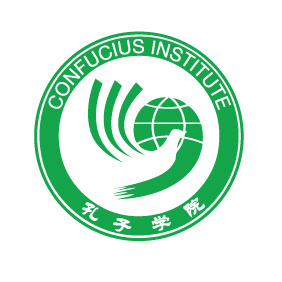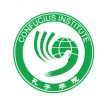
Confucius Institutes and the Question of China’s Soft Power Diplomacy
Publication: China Brief Volume: 12 Issue: 13
By:

After a period of relative calm, Beijing’s promotion of the ever expanding number of overseas Confucius Institutes (CIs) since 2004 came to the attention of the international community once again. As stated in the 2011 Annual Report issued by the Confucian Institute headquarters, there are 112 CIs and 324 Confucius Classrooms in North and South America, including 81 institutes and 299 classrooms in the United States [1]. On May 17, the U.S. State Department issued a statement that the Chinese teachers with a J-1 visa were in violation of the U.S. exchange access provisions, because they were operating outside the institutions ostensibly hosting them. The State Department said it will no longer issue visas to 51 Chinese teachers. The announcement irritated China. Although the U.S. State Department clarified after a week and apologized publicly for the controversy arising from this incident and stressed that the CIs’ activities are consistent with federal law 22 CFR 62.20 (c) (The Chronicle of Higher Education, May 22). Nevertheless, this dispute highlights the development of Sino-U.S. relations is not as calm and stable as the surface suggests. Such controversies, such as the issue of CIs, still need scrutinizing thoroughly.
Confucius Institutes Do Not Equal the Study of Confucianism
The number of CIs worldwide reached more than 858 by May 2012, including 358 Confucius Institutes and 500 Confucius Classrooms. In addition to those in United States, there are, for example, 83 CIs located in 30 Asian countries, 122 CIs in European countries and 25 CIs in Africa. The annual budget for CIs, based on the official statistics, has increased to $164 million—a figure bolstered by local funding [2]. The number is still increasing, but the mounting figure does not guarantee CIs’ global popularity. Not many people are acquainted with the function and operation of CIs. Some people even mistakenly regard CIs as religious institutions or a unit devoted to the study of Confucianism [3].
According to the interviews and fieldworks conducted by the authors at more than ten institutes in eight countries, CIs are not relevant to the study and dissemination of Confucianism. Nonetheless, the authors regard them as an indispensible instrument for Beijing’s careful promotion of soft power diplomacy—a largess to the host countries attached with strings of propaganda. The objectives of these institutes are quite forthright, even admirable—that is, providing Chinese language teaching projects combined with comprehensive cultural, social, and even diplomatic outreach. These incidental activities and events are important, because they transcend the language teaching program with transnational cultural transmission with or without specific political intention.
As contended by noted (and controversial) China expert Steven Mosher, president of the Population Research Institute (PRI), CIs could be “Trojan horses” that may “indoctrinate young Americans into thinking that the Chinese Party-State will not be a threat to its own people or to the world at large” [4]. Another similar argument comes from Glenn Anthony May who has observed the issue of Confucius Institutes since its establishment. May argues there are three “T” words as “anathema” to the Chinese government and Hanban: Taiwan, Tibet and Tiananmen (Yale Global Online, March 4, 2011). These “T” issues are political sensitive and controversial in China and, of course, will probably not be introduced, discussed or debated in teaching materials, classrooms or the outreach activities. In this regard, the mission and goal of CIs is therefore straightforward: to improve and reshape the image of China. The new image of China, clearly, is recalibrated and discoursed by Beijing government.
In recent years, the CIs’ controlling office (Hanban) began to accelerate the expansion of CIs and to reinforce the strategic importance of CI–centric programs. By re-emphasizing their publicity through various channels and focusing on China Studies—for example, traditional Chinese medicine, business, and even dance, etc.—Chinese elites seem to convey their political idea of “Harmony without Sameness” (he er bu tong) to an international audience [5].
In addition to the increasing numbers of CIs, Beijing gradually has taken into consideration the quality of each potential institute to better serve the strategic interests involved in China’s “Going Global Cultural Diplomacy” (wenhua zou chuqu waijiao) and the statement of “Popularize Chinese Culture around the World” (tuidong zhonghua wenhua zouxiang shijie) [6]. For example, the Chinese Cultural Centers and CIs were cited as important mechanisms in implementing the Going Out Cultural Program in the text of “Twelfth Five-Year Plan for National Economic and Social Development” (guojia shierwu shiqi wenhua gaige fazhan guihua gangyao) announced on February 16.
Equipping Soft Power Diplomacy with Chinese Culture?
CIs are overseas languages institutes, purely working on Chinese language education and cultural promotion. The aim of CIs, however, is more than promoting Chinese-language education. It is aimed at promoting the internationalization of Chinese culture. The diffusion of CIs is embraced by domestic pursuit of purposeful soft power diplomacy. The networking undertaking of Confucius is correspondent to Beijing’s going out diplomacy, and the strategy is to publicize China is rising with a “civilized, democratic, open, and progressive image” (wenming, minzhu, kaifang yu jinbu de xingxiang) around the world [7].
Among the academics, think thanks and policy community in China, arguments have been stressed repeatedly that the global output of CIs is aimed at two-way cultural exchange, rather than one-way cultural transmission [8]. With adequate resources, CIs currently are tasked by Chinese government to diffuse soft power and to redefine the image of China internationally. They fulfill two important tasks in pursuit of this objective. First, CIs now are conducting programs for those professionals who teach Chinese locally, such as in Cambodia and Thailand. The current orientation of CIs is to continue cultivating Chinese language education through drafting teaching materials and training teachers. In doing so, a legitimate understanding of China and a government-approved understanding of Chinese culture and society can be facilitated [9]. Second, CIs are working with specific institutes for advanced China studies mostly in the United States and in Europe. It is entirely possible that this offers a way to reinforce a favorable impression of China among local epistemic communities.
The implicit propaganda become more explicit and multi-pronged as CI global outreach has expanded. Some international critiques even pointed out that China has been unable to hide this political agenda and strategic intent behind the development of CIs and the related activities on Chinese culture exchanges (Deutsche Welle, January 25; University World News, December 2, 2007; The Guardian, November 6, 2007).
Traditional culture is the most important soft power resource of China. It seems that in recent year Confucianism has been promoted in China and abroad by Chinese government as a moral code for modern China (Yale Global Online, January 25, 2010). Nevertheless, the emerging configuration of Chinese culture with both traditional and contemporary traits is the least aggressive but most influential instrument. When Confucius Institutes are irrelevant to understanding Confucianism, one has to admit that people in CIs are educated and cultivated by a selective version of Chinese culture with propaganda contoured and framed by the Chinese government. The cultural activities and events activated by and exhibited in CIs are facilitated in a politically harmonious manner—only intending to contribute to the ideational part of China’s development environment.
Interestingly, the setting reminds the authors of the propaganda in the 1940s when the CCP used political posters to “propagate correct behavior and thought.” Such materials were believed to educate the people in what was considered right and wrong. As argued by Stefan R. Landsberger, propaganda exists “as long as the State provided examples of correct behaviors, this automatically would make the people believe what was considered proper to believe” [10]. We strongly doubt, however, that the CI-related activities are combining cultural transmission with purposeful, explicit propaganda.
Promoting Chinese culture to serve China’s national interests seems to be an effective instrument that recalibrates China’s understanding and implementation of soft power diplomacy. In recent years, Chinese academia strengthened this development by formulating a Chinese version of soft power while the policy community in Beijing committed to equip soft power diplomacy and united front work with traditional—if government-approved—cultural ideas. The diffusion of CIs may not make the image of unsupported human rights and in the suppression of democratic politics in China disappear. Such kinds of contradictions and differences, however, probably weaken the effectiveness of China’s soft power diplomacy (Yale Global Online, May 4).
Politicization of Cultural Nationalism
Understanding CIs through domestic Chinese and international channels can be very different. International sources reflect deliberation, doubts, and debates over the CI phenomenon, while domestic sources concerning CIs are always filled with praises and compliments. Domestic critiques of the CI infrastructure are seldom observed. If and when those criticisms appear, they will most likely be critiqued as a refusal of cultural nationalism. In recent years, Chinese intellectuals have incubated cultural and political self-criticisms on cultural nationalism, such reflection, however, cannot justify the political correctness in defense of China’s national interests.
The rise of CIs cannot be comprehended solely by China’s attempted political framing of its history, language and culture. As the famous historian Professor Yu Yingshi has recently said in an interview, although China actively establishes CIs, it does not mean Beijing intends to reinforce and strengthen the Confucian-centric culture. Some Chinese leadership even persists in anti-Confucian motives, which is more critical. Indeed, CCP is very difficult to put aside the burden of the past, such as “Do Away with the Four Olds and Cultivate the Four News” (posijiu lixixin), “Criticize Lin (Biao), Criticize Confucius” (pilin pikong) and “Great Proletarian Cultural Revolution” (wenhua da geming). Although China vigorously promotes the layout of overseas CIs, its ideology does not change, which also weakens the linkage between CI itself and the core value of Confucianism, even the traditional Chinese culture.
Despite their role in promoting Chinese culture internationally, one may not argue arbitrarily that CIs must be involved in intelligence collection or operating with specific political intent as indicated by some criticisms (People’s Daily, June 12, 2010). Nevertheless, we contend CIs do not really contribute to the correct understanding of the real face of China. Chinese political elites have long deliberately (or, less likely, inadvertently) politicized the historical and cultural significance of Confucius in the name of public diplomacy. Such ignorance has been converted into the agenda of CI that only values the “cultural brand” of Confucius with cultural modernity and linguistic pragmatism.
The rise of CIs has facilitated Beijing’s soft power output towards the world, but such crafting of purposeful propaganda attached with politicized mission already inevitably stirred up more concerns and doubts against China’s going global cultural nationalism not only from the host countries of CIs but also from the rest of the world.
Notes:
-
Hanban Confucius Institutes Headquarters 2011 Annual Report, Hanban, 2012, pp.12-13.
- Ibid., p.51.
- Authors’ Interview in Hua, Vietnam, April 18, 2011.
- This is cited from the testimony presented to the Subcommittee on Oversight and Investigations House Committee on Foreign Affairs on March 28, 2012, see Steven W. Mosher, “Confucius Institutes: Trojan Horses with Chinese Characteristics,” Population Research Institute, March 28, 2012, https://pop.org/content/confucius-institutes-trojan-horses-chinese –characteristics.
- Authors’ Interviews in Beijing, May 8, 2012 and November 27, 2010.
- The statement is from Zhonggong zhongyang guanyu shenhua wenhua tizhi gaige tuidong shehui zhuyi wenhua dafazhan dafanrong ruogan zhongda wenti de jueding [Resolution of the Central Committee of the CCP on Some Important Issues Concerning Deepening Cultural Restructuring and Promoting the Development and the Prosperity of Socialist Culture], Beijing: Renmin chubanshe [People’s Press], 2011, p.35.
- Ibid., pp. 35–36.
- Authors’ Interviews in Beijing, December 23–24, 2010.
- That is, the “controlling” version of Chinese languages program, see Michael Churchman, “The Confucius Institutes and the Controlling Chinese Languages,” China Heritage Quarterly, No. 26, June 2011, https://www.chinaheritagequarterly.org/articles.php?searchterm=026_confucius.inc&issue=026.
- Stefan R. Landsberger, “The Rise and Fall of the Chinese Propaganda Poster,” Chinese Propaganda Posters, Taschen, 2003, p. 19.
<//span>





